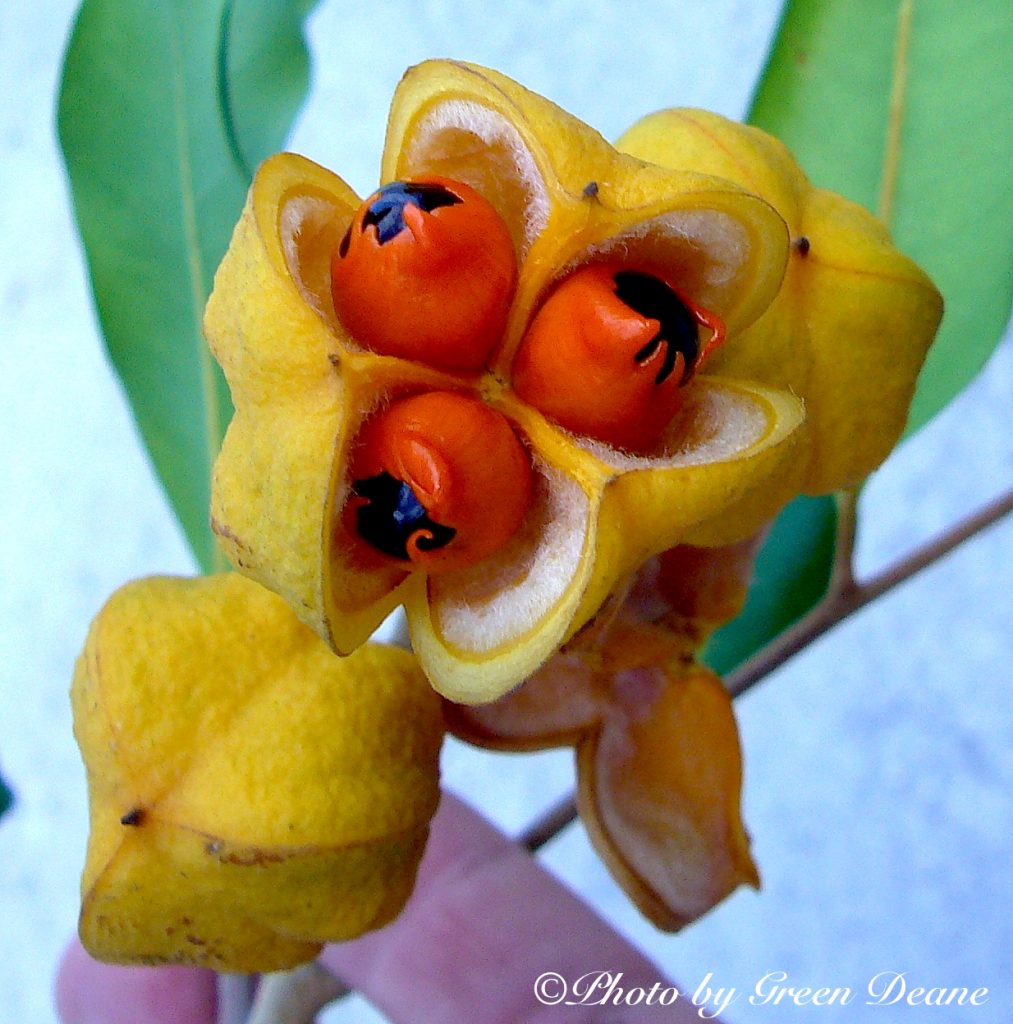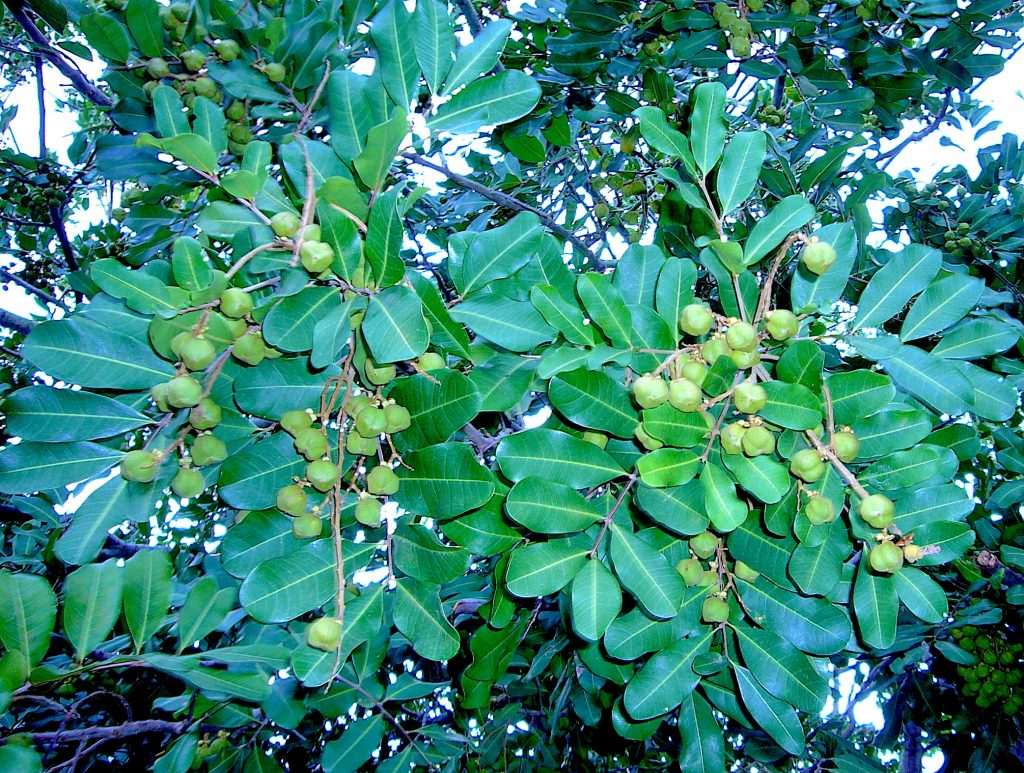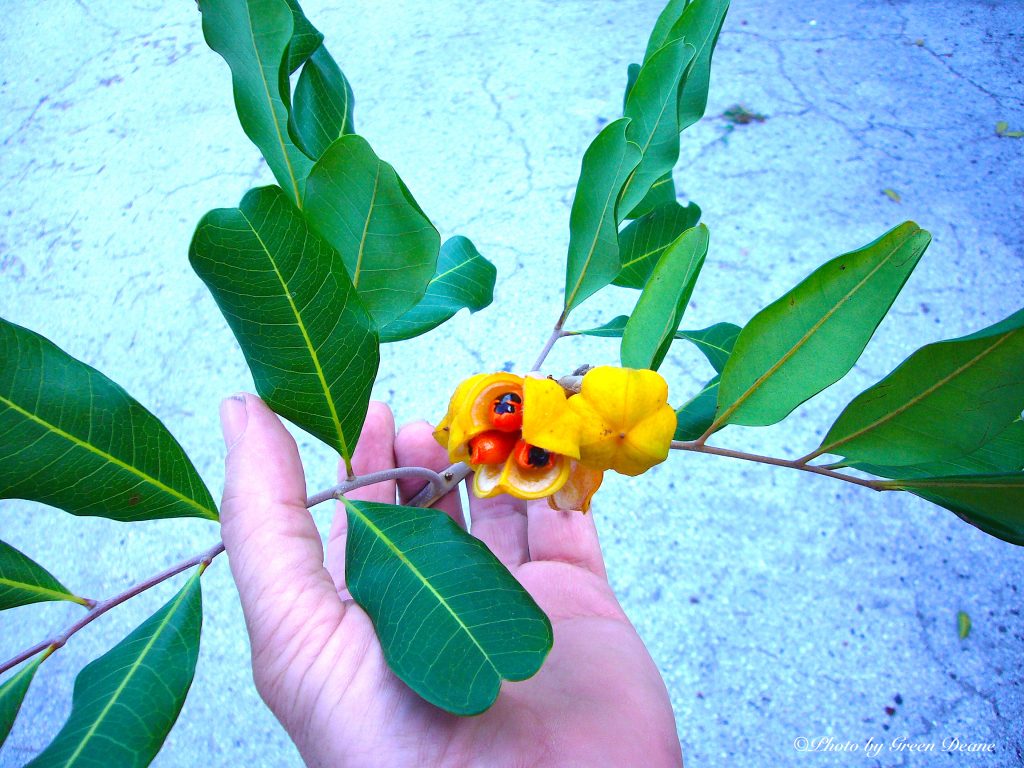
Cupaniopsis anacardioides: An Aboriginal Treat
With a nickname of Tuckeroo, you know the Carrotwood Tree has to be from Australia, and it is. What foraging books in this hemisphere won’t tell you is that part of the ripe fruit is supposedly edible. (Many thanks to Lee Etherington at the www.bushtuckershop.com for doing some original Australian research for me. Please visit their site and watch the Bushtucker Man videos.) That said, not all opinions agree on aril edibility and at least one source says the arils are not edible.

Several governmental sources in Australia say the Aboriginals did indeed eat the ripe aril, some say it is toxic. I found it nearly tastless but it burns my mouth and upsets my stomach. I’m not sure how the Aboriginals considered it a treat. Perhaps I am missing a bit of information. In Australia the tree is also called the Cupania Tree and the Beach Tamarind. Botanically it is the Cupaniopsis anacardioides (koo-pan-nee-OP-sis an-nuh-kar-dee-OP-sis )

One can find a lot about the evergreen C. anacardioides on the internet because it is on Florida’s hit list of invasive gawd-awful weeds. (I am beginning to suspect the best place to find edibles is on your state’s official weed list.) The fruit starts out green then turns bright yellow. It’s a common tree on the east and north coasts of Australia and was imported in the 1960’s to Florida, Texas and California for landscaping. It has not become a pest in California. What caught my eye the first time I saw them was the distinctive shape of the fruit, three lobed comprised of six segments.
The tree’s status in Florida brings up several issues. You cannot own the tree without a permit, the state considers it so bad. Birds, of course, don’t apply for permits to eat the fruit. But then the political correctness kicks in. The state says there is no use for the tree. That is quite false. The wood is favored by wood turners and pricy. Seems to me cutting down the trees for turning reduces the population and generates income. The state just needs to sell the permits to harvest them.
Although called the Carrotwood Tree it wood is actually apricot to pink, close-grained and very tough. It has been used for lumber as well as turning. The tree can grow some 80 feed hight and two feet through at the butt. Locally they are half that height and 20 inches thick.
Cupaniopsis means resembling the genus Cupania (which is named for Francesco Cupani, an 18th century Italian monk and natural scientist who wrote Hortus catholicus and is famous for his work with Lathyrus odorata.) Anacardioides means resembling Anacardia (the genus name for Cashew.) Two resemblances…. they must of run out of ideas that day. Several plants are called “tuckeroo” in Australia so make sure you have the right Tucheroo, Cupaniopsis anacardioides.
One quick identification of the tree is the leaves are spatulate with a bit of an indentation at the end, and each branch ends in a pair of leaves slightly off set (whereas the Jambul tree end leaves are an equal pair.)
You can find them mid-state and south.
Green Deane’s “Itemized” Plant Profile
IDENTIFICATION: Small to medium tree to 30 feet. Leaves compound, 4-11 leaflets, glossy-green, obovate to oblong, 5-15 cm long, 2-6 cm wide, end two leaves are always form a pair. Flowers yellowish, occurring in winter. Fruit orange, 15-30 mm diameter, short-stalked, three-segmented woody capsules up to 0.9 inches across that are yellow-orange when ripen and then dry to brown before splitting open to reveal three black seeds each covered by a yellow-red crust.
TIME OF YEAR: Flowers in Florida in late winter or early spring, January and February, with fruits maturingin April and May depending upon location, sooner farther south, later farther north.
ENVIRONMENT:Spoil islands, beach dunes, marshes, tropical hammocks, pine lands, mangrove and cypress swamps, scrub habitats, and coastal strands.
METHOD OF PREPARATION: Ripe aril eaten raw, not the seeds, not the pulp. I know one source says the arils are not edible. I don’t eat them.

